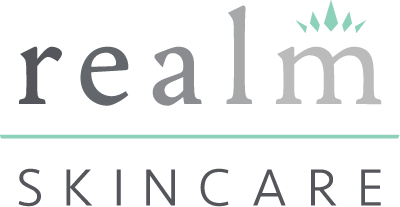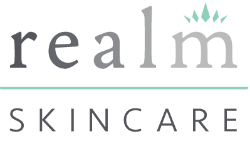Zinc Oxide is regarded as the “Gold Standard” when it comes to uncompromised sun protection. Perhaps Zinc Oxide’s greatest attribute is the fact that it is the greatest natural alternative to chemical sunscreen ingredients and formulations. Chemical ingredients can often cause skin irritation, allergies or sunburns, especially on compromised or sensitive skin. Unfortunately over 75 percent of sunscreens sold in the world today are toxic, and contain many irritating chemicals. Chemical ingredients such as Oxybenzone, Octinoxate, Homosalate, Octisalate, and Avobenzone are just a few of the harmful chemical sunscreens that you will find in most sunscreens on the market. Not only do these ingredients cause irritation, and acne causing inflammation, but they can also act as endocrine disruptors which can cause your body to produce more estrogen, disrupting your body’s natural hormone balance. These ingredients can lead to problems with your thyroid; can contribute to endometriosis in women; can affect sperm count in men...just to name a few. Realm Skincare’s Reflect 42 and Reflect 45 sunscreens do not use any of these harmful ingredients in our formulations. Our sunscreens feature Zinc Oxide and Titanium Dioxide, both mineral, physical sunscreens to protect your skin from the sun’s potentially harmful ultraviolet rays.
There are several factors as to why Zinc Oxide works on the skin to block sun damage from UV light, making it a superior choice to chemical sunscreen ingredients:
-- Zinc Oxide is a mineral, that sits on the skin’s surface and reflects the sun by scattering away harmful ultraviolet rays (UVA and UVB). For this reason, Zinc oxide is also known as a “physical barrier ingredient” as opposed to a “chemical ingredient.” The mechanism of action differs greatly when comparing physical and chemical sunscreens. Chemical sunscreens work by absorbing ultraviolet rays and keep them trapped on the surface of the skin so they cannot penetrate deeper into the skin. The most commonly used chemical sunscreen is Oxybenzone, an ingredient which studies have shown causes irritation, inflammation and toxicity to the skin (https://www.ewg.org/sunscreen/report/the-trouble-with-sunscreen-chemicals/).
The problem with most widely available sunscreens is that the individual chemical ingredients often work by blocking either UVA or UVB rays, but not both. This leads to most sunscreen manufacturers needing to combine several different chemical ingredients into one product to prevent sun damage. The result? The more chemical ingredients in one formulation, the higher the chances are for negative reactions, allergies and irritation. The more sensitive your skin is to these harmful ingredients, the higher the chances you will have skin reactions such as inflammatory acne, swelling and even hives.
The Benefits of Zinc Oxide
The natural, sun-protecting attributes of Zinc Oxide are widely known amongst scientists and skincare experts around the world. Unlike chemical sunscreen ingredients, Zinc Oxide has been proven to protect against “Broad Spectrum Ultraviolet Rays” (UVA and UVB). Zinc Oxide has so many beneficial properties, that you can find it in many products beyond sunscreen.
Zinc Oxide for Acne
Unbenounced to many, Zinc Oxide can help treat acne. A 2013 study in the Journal of Drugs in Dermatology (https://jddonline.com/articles/dermatology/S1545961613P0542X/1), show that there are several ways that Zinc Oxide can help treat and prevent acne:
- Zinc Oxide’s antimicrobial and antibacterial properties can help reduce the appearance of acne.
- By reducing inflammation that is triggered in response to acne-causing bacteria and clogged pores.
- By reducing the chances that acne will surface once the skin becomes resistant to topical or oral antibiotic medications.
- By regulating oil and/or sebum production.
- Acts as an astringent, which helps to dry excess oil and shrink the appearance of large pores.
Research also suggests that topically applied zinc alone or in combination with other ingredients is effective due to its anti-inflammatory properties and ability to reduce P. acnes bacteria.
Zinc Oxide for Skin Irritation
Recent studies have revealed the potential for Zinc Oxide to provide relief from many dermatological conditions such as atopic dermatitis (eczema), heat rash, and seborrhoeic dermatitis, rosacea, and neoplasias. Zinc Oxide can also help treat conditions like the itch from poison ivy, skin ulcers, and diaper rash.
Zinc Oxide for Bacterial Infections
Zinc Oxide has the ability to act like a mild astringent to keep harmful bacteria from causing infections of the skin. Zinc Oxide can also be used to treat wounds post surgery and skin procedures by repairing epidermal wounds of the skin to form new collagen and connective tissue. A 2003 study in the Journal of Nutrition (https://academic.oup.com/jn/article/133/12/4077/4687461) found that Zinc Oxide can help to reduce bacterial infections by inhibiting the internalization and adhesion of bacteria.
Zinc Oxide also helps to reduce inflammation caused by bacterial build up.
Zinc Oxide for Anti-Aging
We know that Zinc Oxide helps prevent wrinkles and dark spots by protecting the skin from sun damage, but studies also show that it can help improve build new skin tissue and collagen, which is essential to maintain the skin’s youthful appearance. The body requires minerals such as zinc to build and repair connective tissue. Research shows that treating compromised, post-procedure skin with Zinc Oxide helps the skin heal better and faster. Zinc can also aid in the absorption of other ingredients which also helps the skin’s ability to heal itself and produce more collagen and elastin.
 USD
USD EUR
EUR
 GBP
GBP


